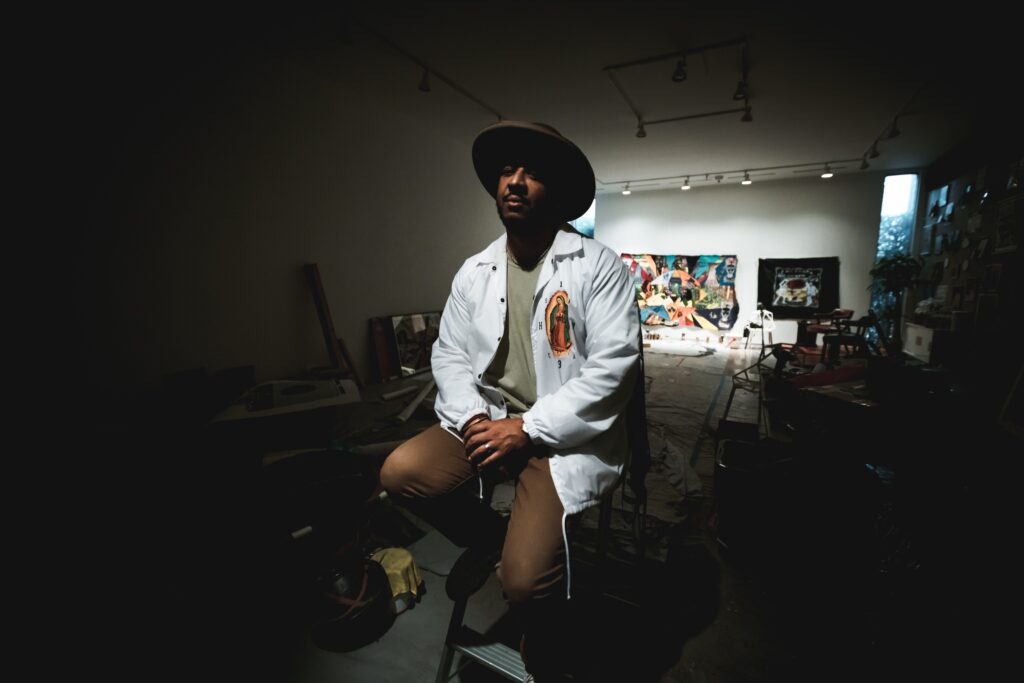Robert Hodge’s 20-year journey is a testament to the unwavering dedication, resilience, and boundless creativity that define the life of a professional artist. His story is a reminder that within each of us resides the potential for artistic greatness. As you embark on your own artistic voyage, remember these invaluable tips and let them guide you towards your own unique legacy in the world of art. May your journey be as remarkable and inspiring as that of Robert Hodge.
Overcoming External Fear:
- External fear, often projected by well-meaning but apprehensive family members, can be a significant hurdle for aspiring artists. Understand that their concerns stem from a desire to see you succeed and may not reflect the reality of the art world. It’s essential to have open conversations with your loved ones about your passion for art and your commitment to pursuing it. Show them your dedication and educate them about the diverse opportunities within the creative field.
Overcoming Internal Fear:
- Internal fear, such as fear of failure or rejection, is common among artists. It’s crucial to recognize that fear is a natural part of the creative process. Instead of letting it paralyze you, use it as a motivator to push your boundaries and grow as an artist. Embrace failure as a stepping stone to improvement and view rejection as an opportunity to refine your work.
Building Confidence:
- Confidence often comes with experience. Surround yourself with a supportive artistic community, including mentors and peers who provide constructive feedback and encouragement. Believe in your unique perspective and the value of your art, even when self-doubt creeps in.

Embrace Consistency:
Consistency in your art practice is essential for growth. Establish a regular schedule for creating, and commit to it, even when inspiration seems elusive. Many breakthroughs occur when you persevere through creative blocks and maintain a steady work ethic.
Style Development:
- Developing a unique artistic style is a journey that requires patience. Don’t rush the process; experimentation is key. Explore various techniques, mediums, and subjects until you find what resonates with your creative voice. Your style will evolve organically as you continue to create and refine your artistic language.
Industry Knowledge:
- Stay informed about the art industry by actively participating in it. Attend art fairs, exhibitions, and workshops. Network with fellow artists, gallery owners, and collectors. Understanding the market and industry trends will empower you to make informed decisions about your career path.
Legacy Consideration:
- Reflect on the legacy you want to leave through your art. Consider the impact you wish to have on future generations and the broader art community. This long-term perspective can provide a profound sense of purpose and direction in your artistic journey.
Art History Familiarity:
- Delve into art history to gain inspiration and deepen your understanding of the art world. Studying the works of past masters allows you to appreciate the rich artistic tradition you are a part of and provides context for your own creations.
Overcoming Complacency and Procrastination:
- Fight complacency and procrastination by setting clear goals for your artistic practice. Break these objectives into smaller, manageable tasks, and hold yourself accountable. Find sources of motivation that keep you engaged and productive.
Balance Waiting on Inspiration:
– While it’s important to remain receptive to inspiration, don’t rely solely on it. Often, inspiration emerges when you’re actively engaged in your art. Keep creating consistently, even during periods when inspiration appears elusive.
Understanding Distractions:
– Not all distractions are detrimental. Some can lead to new ideas and perspectives. Learn to differentiate between distractions that hinder your work and those that enrich it. Embrace productive distractions that contribute to your creative process.
Remember that every artist’s journey is unique, and it’s normal to encounter both internal and external challenges. Embrace these challenges as opportunities for growth, and continue to create authentically, knowing that your art has the power to impact and inspire others in profound ways.





GIPHY App Key not set. Please check settings